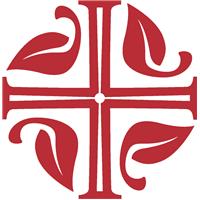Storm and Stillness, Breath and Dove,
Thunder, Tempest, Whirlwind, Fire,
Comfort, Couns’lor, Presence, Love,
Energies that never tire:
May the church at prayer recall that no single holy name
but the truth behind them all is the God whom we proclaim[1]
Our scriptures —and the liturgies, prayers, and songs informed by the scriptures—offer us abundant images for God. This abundance matters, especially as the church seeks to broaden its use of expansive and inclusive language. How do the ways we speak and sing about God reflect the abundant life God intends for God’s children and for all creation?
One year ago, this month, the fifteenth ELCA Churchwide Assembly adopted the social statement, Faith, Sexism, and Justice: A Call to Action. In calling for new commitments and actions as a church, the statement notes in article 27:
This church is committed to the deepest Christian understanding of the Trinity revealed through Jesus Christ and to the importance of imagining and speaking about God in faithful ways that expand rather than limit the expression of God’s self-revelation and mystery…Employing inclusive and expansive language for and images of God helps human beings approach and encounter the God of beauty and love who reveals God’s self to humanity in rich and mysterious ways.
To assist the church in accessing an expansive treasury of imagery, All Creation Sings, the forthcoming liturgy and song supplement to Evangelical Lutheran Worship, will include the informational appendix, “Scriptural Images for God.” The book’s introduction to this list of images describes its contents:
This selection of one hundred images from the New Revised Standard Version Bible testifies to the plethora of biblical images available for addressing the triune God. Thanks to this wealth of biblical imagery, we can complement those beloved images that we know well with the wide range of other images found in sacred scripture, thus enriching the language of our prayer and praise.
This list of images begins with the heading, “In the scriptures, God is imaged…” The list of one hundred images follows, each one paired with a biblical source. The word “image” refers not to a picture, but to the word “pictures” that are possible through metaphor, symbolic language that points beyond itself to a greater truth or reality. For example, “vine: I am the true vine (John 15:1).” Complementing the “Scripture and Worship” entry in Evangelical Lutheran Worship (pp. 1154–1159), this appendix in will be a helpful resource for preachers, prayer writers, and all who are looking for the biblical sources for worship language.
The hymn stanza quoted above is one of many hymns and songs in All Creation Sings that draws upon metaphors listed in “Scriptural Images for God.” Even with such a treasury of language, words will never be enough; they will fail to express the mystery of the divine power we call Trinity. Our shouts for joy or our sighs too deep for words must suffice at times. Yet our words form our faith and shape who we believe God to be in relationship with the world God so loves. The songs and prayers we teach our children will remain with them for a lifetime. As Principles for Worship reminds us,
Language used in worship has power to form and shape believers, sending us from the assembly to live as merciful and just people who serve the mission of God in this world. (Principles for Worship, Application L-4C)
In providing this new appendix as well as a diversity of images in song and prayer, it is our hope that treasured language —both old and new—will enrich and shape our worshipping communities in praise of God and in love of neighbor.
[1] “Source and Sovereign, Rock and Cloud.” (Stanza 3) Text: Thomas Troeger © 1986 Oxford University Press.
